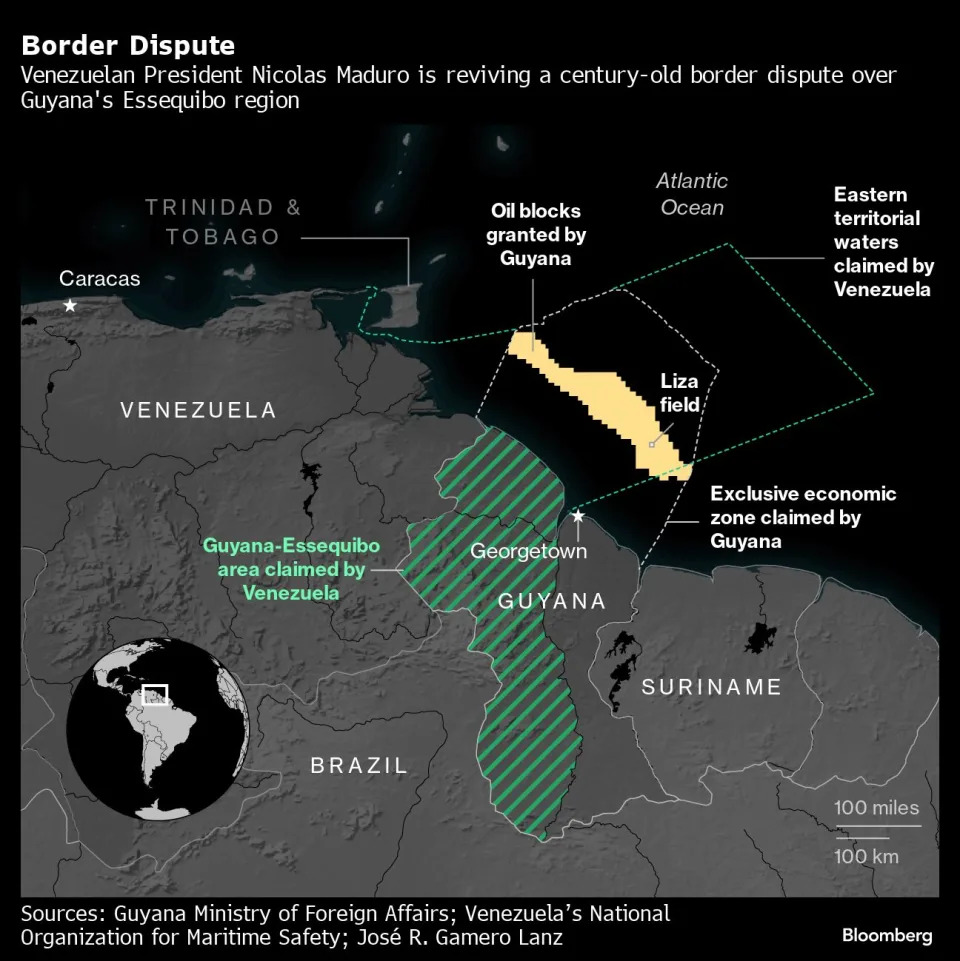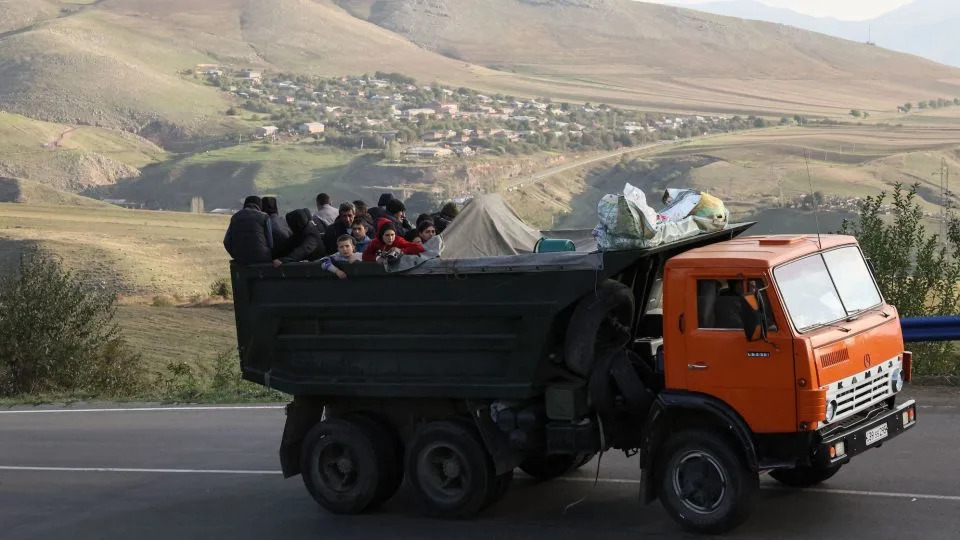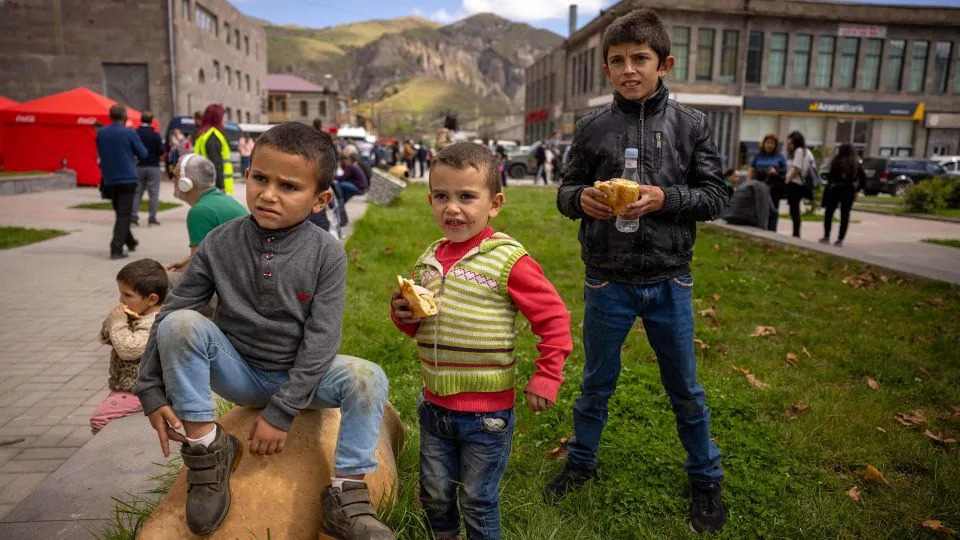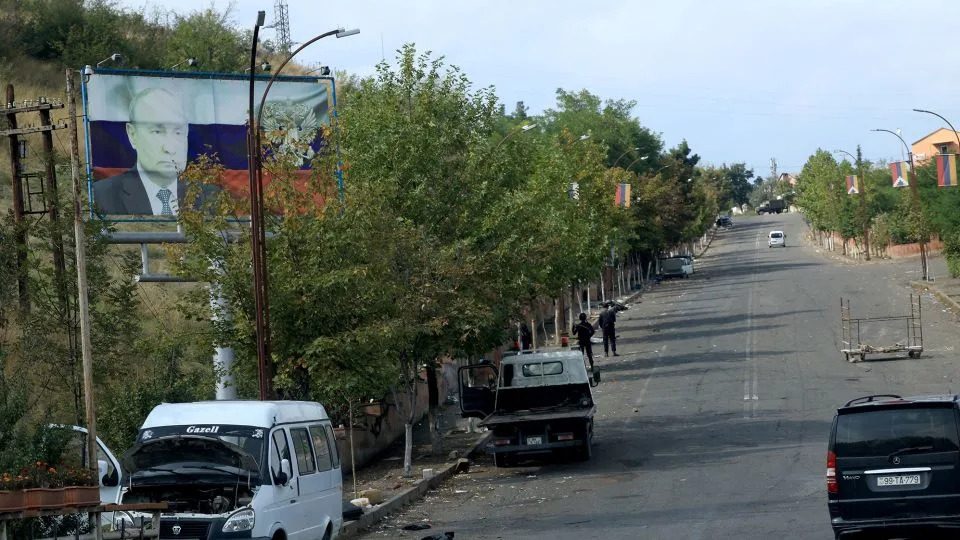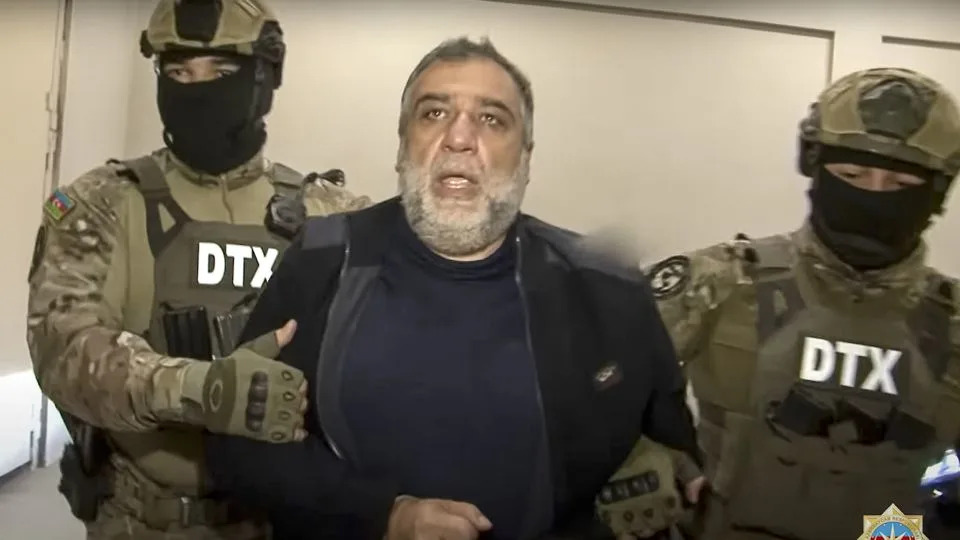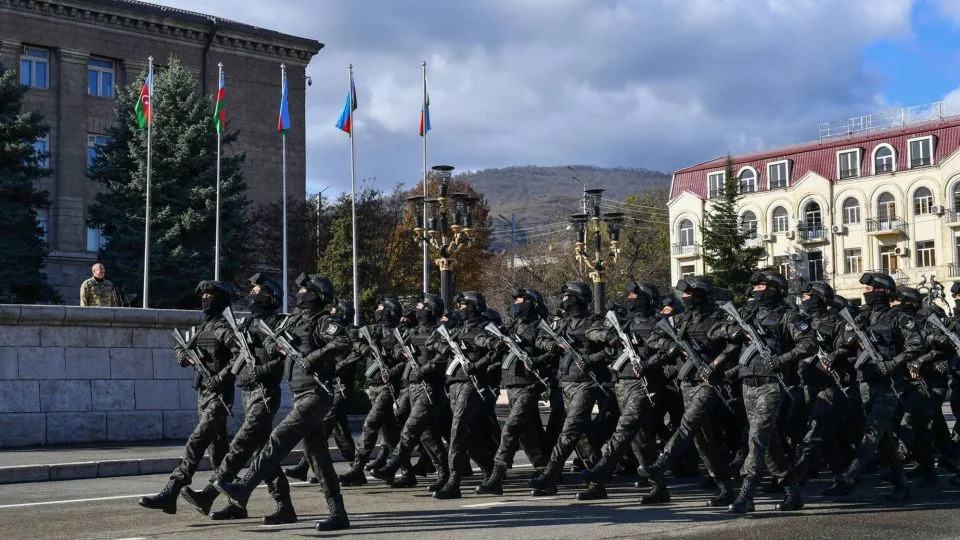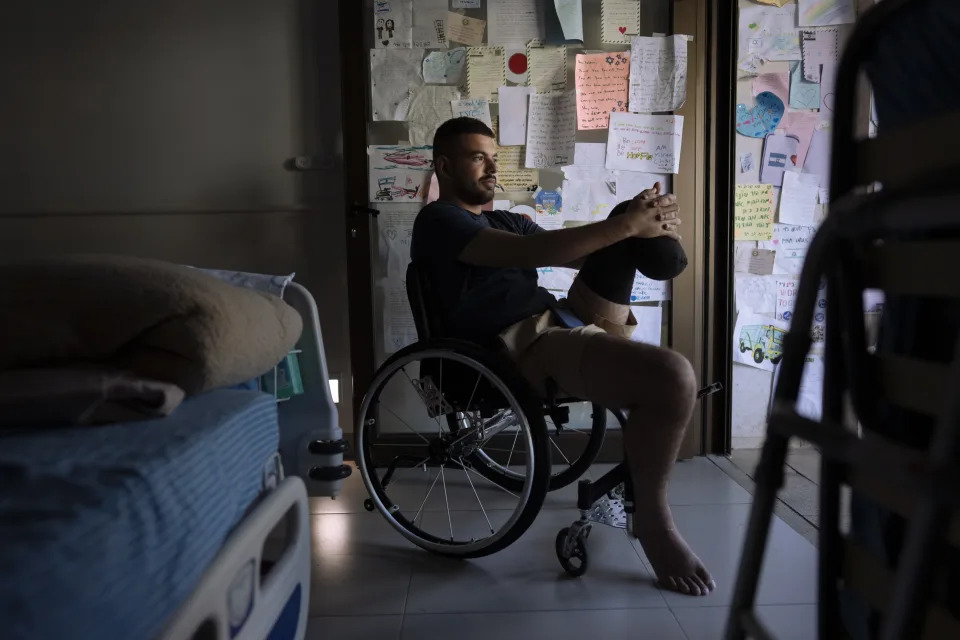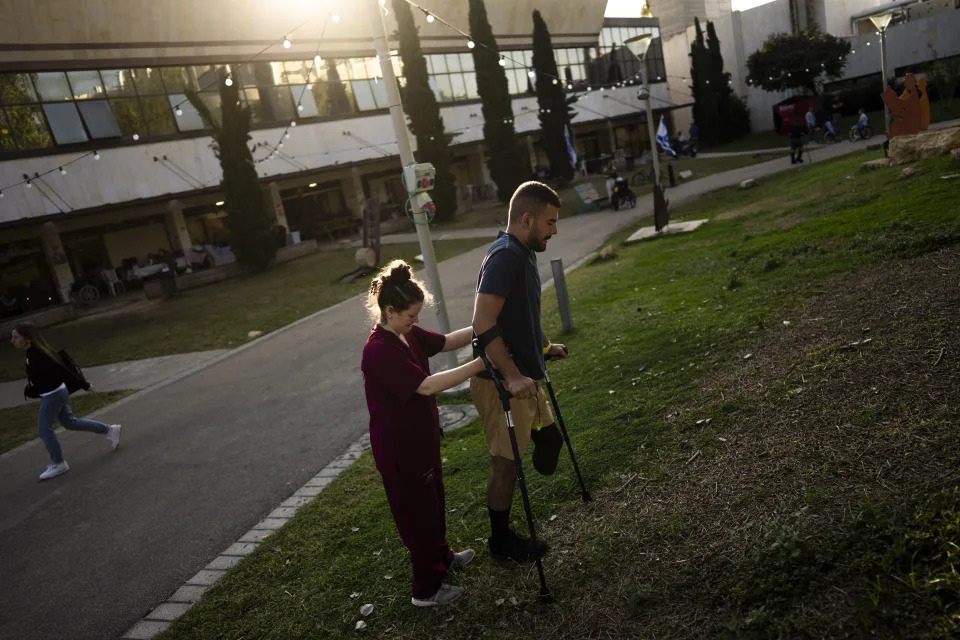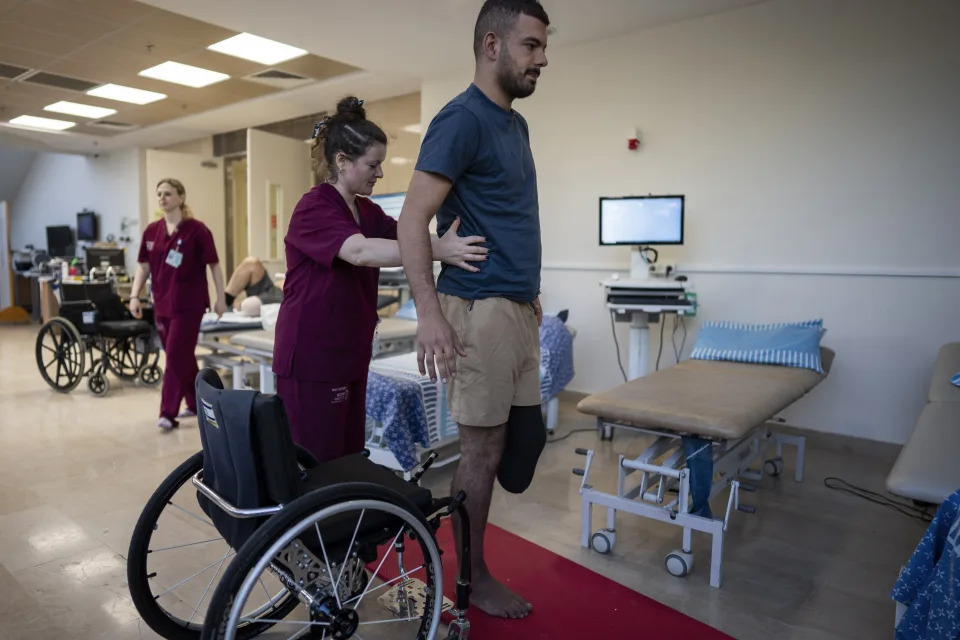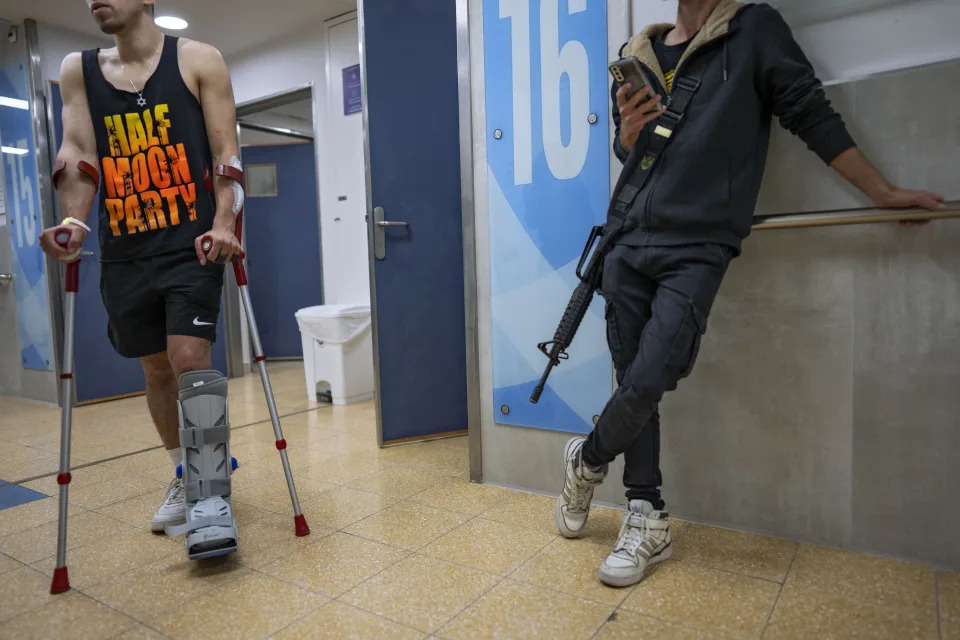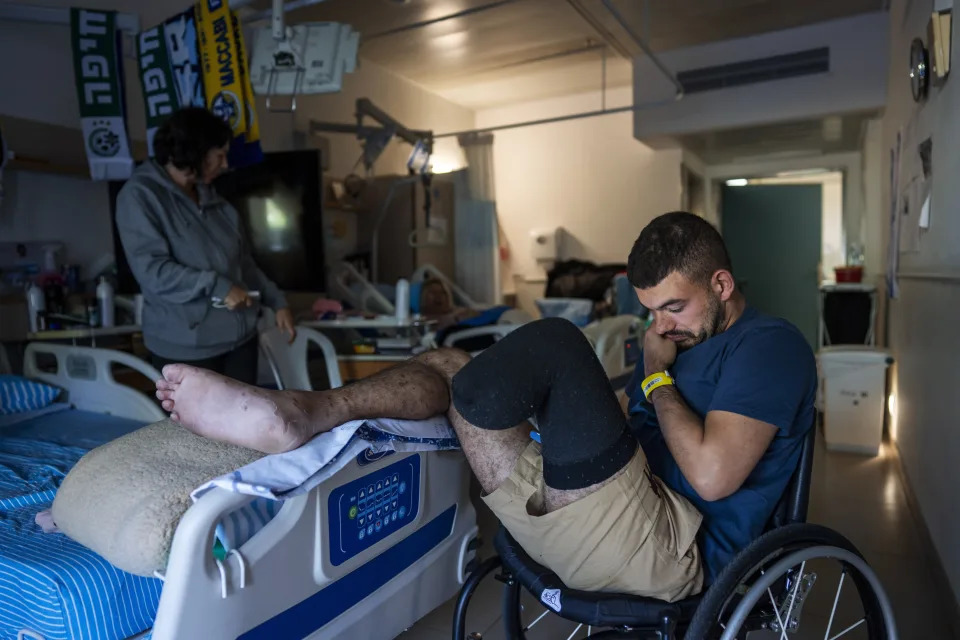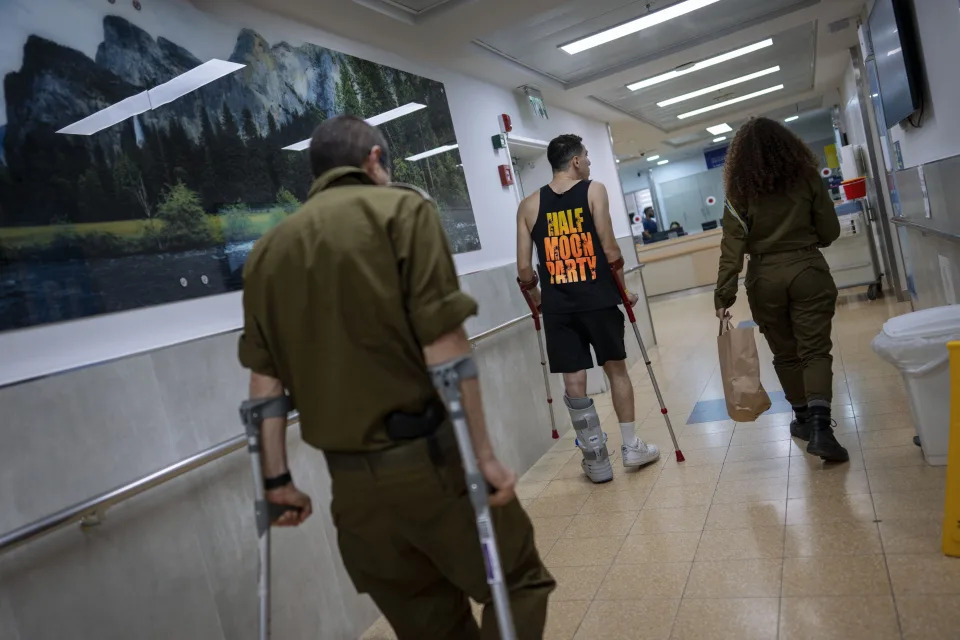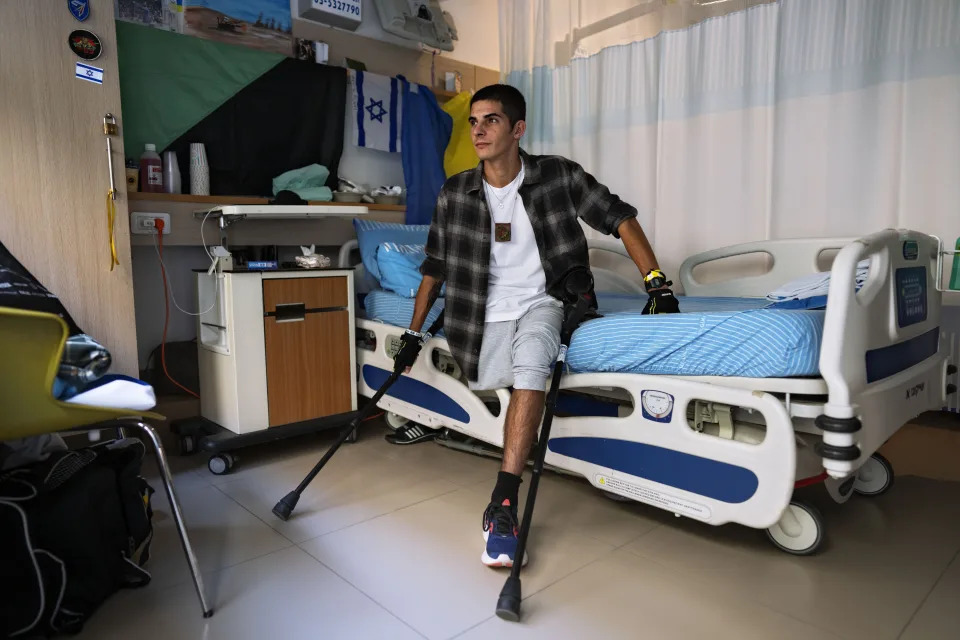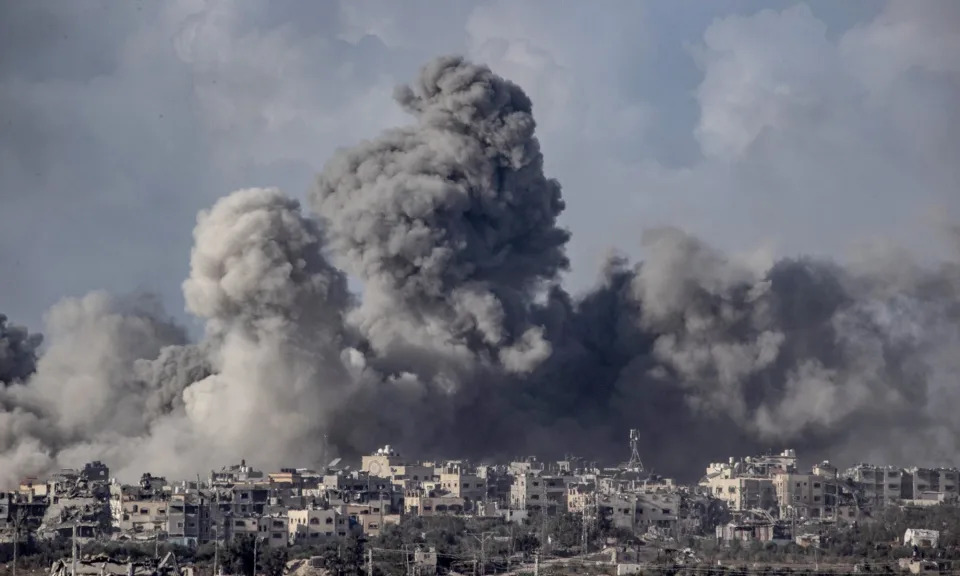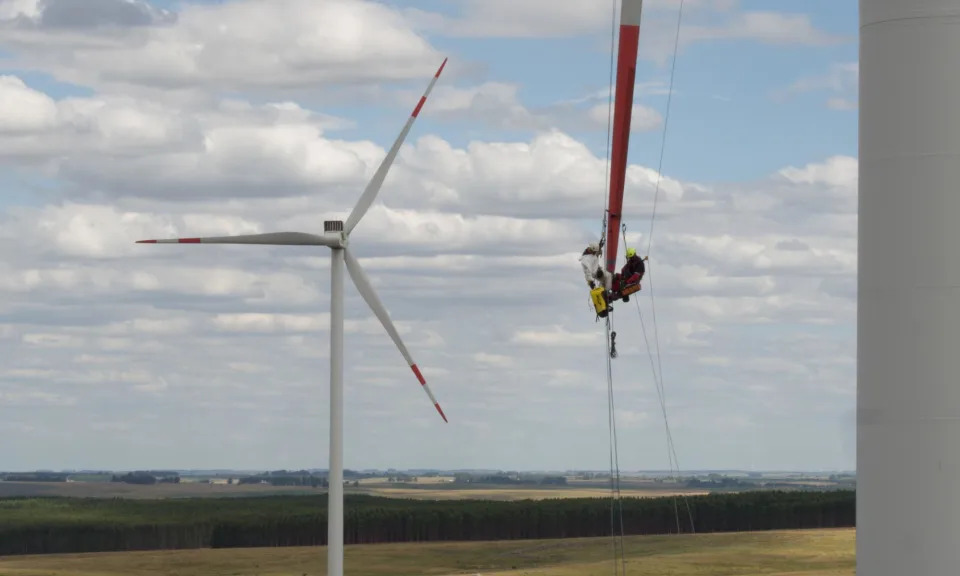Palestinian President Mahmoud Abbas says conflict in Gaza is 'greater than war of extermination'
Sky News
Updated Wed, 27 December 2023
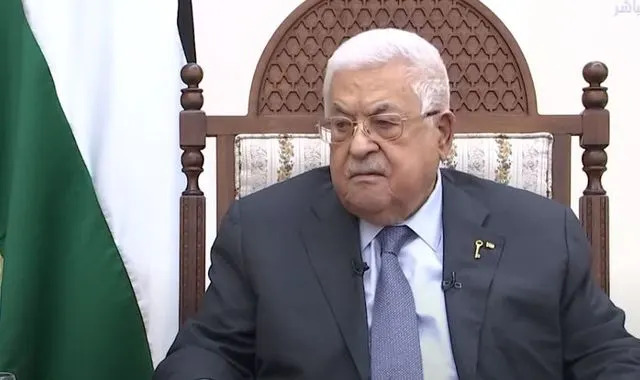
Mahmoud Abbas President of the State of Palestine since 2005
Palestinian President Mahmoud Abbas has said the war in Gaza is "greater than a war of extermination".
Speaking to Egyptian TV channel ON, Mr Abbas claimed the impact of the conflict between Israel and Hamas on the Palestinian people is "greater than a disaster".
He went on to compare the war to the mass displacement and dispossession of Palestinians during the 1948 Arab-Israeli war - which the Palestinians call nakba, meaning catastrophe in Arabic.
"What happened in 1948, emigration and destruction, and what is happening now is far uglier than what happened (then)," Mr Abbas said.
"What is happening now is the ugliest thing happening to the Palestinian people, not only in Gaza but in the West Bank and Jerusalem in the last 79 days to today."
It comes as the Hamas-led Gaza health ministry says 250 Palestinians have been killed and 500 wounded in the past 24 hours - with 106 of those said to have died in a Christmas Eve airstrike on the Maghazi refugee camp.
A further six people were killed in the West Bank city of Tulkarm during an Israeli raid, the Palestinian health ministry said on Wednesday.
But despite international efforts to halt the fighting, Israel's prime minister told members of his party the war "isn't close to finished".
When asked how the Israeli leadership imagines Gaza after the war, Mark Regev, senior adviser to Benjamin Netanyahu, told Sky News Hamas "must be destroyed".
'In front of the eyes of the world'
During the interview, the Palestinian president criticised the US for its continued support for Israel since the 7 October Hamas-led attack.
He claimed that the deaths of civilians is happening "in front of the eyes of the world" and America is in the lead.
He implied that if the country accepts a United Nations resolution calling for an immediate ceasefire, rather than vetoing it, the war may have a chance of coming to an end.
On 15 December, Mr Abbas met with US national security adviser Jake Sullivan, who reiterated the US's stance that the Palestinian Authority should be responsible for governing Gaza at the end of the war.
But, he acknowledged that significant changes and "a lot of work" would be needed to revamp and revitalise the authority.
Mr Abbas agreed that a Palestinian state must be established in the aftermath of the conflict, reiterating in the Egyptian TV interview that it must be made up of the West Bank, Gaza and East Jerusalem, The Times of Israel reported.
'Isn't a day without killing'
The Gaza health ministry reports 20,674 people have been killed and 54,536 injured in Israeli strikes since 7 October. Around 1,200 Israelis were killed by Hamas raiders that day.
Acknowledging the level of destruction, Mr Abbas said "there isn't a day without killing" in all the cities and refugee camps in Gaza, adding that the Israeli military's defence about "protecting itself" is without logic.
Meanwhile, both Hamas and Islamic Jihad have been holding separate talks with Egyptian mediators in Cairo.
But, according to two Egyptian security sources, both sides rejected Egypt's proposal for a permanent ceasefire - which would reportedly involve Hamas giving up power in the Gaza Strip.
"We reiterate that there can be no negotiations without a comprehensive cessation of aggression," Izzat Al Rishq, a member of Hamas's political bureau, said in response.
NAKBA 2.0
Six Palestinians killed in Israeli raid in West Bank city of Tulkarm
Wed, December 27, 2023
By Ali Sawafta
TULKARM (Reuters) - Six Palestinians were killed by a drone strike during an Israeli raid n the West Bank city of Tulkarm, the Palestinian health ministry said on Wednesday, one of the latest examples of rising violence since the start of the Israel-Hamas war in Gaza.
The Israeli military said its forces came under attack by militants who threw explosive devices at them during a counter-terrorism operation. The attackers were struck by an Israeli air force aircraft, it said.
The confrontation took place in the Nour Shams refugee camp in Tulkarm, a flashpoint city on one of the main crossing points into the West Bank.
Witnesses said the six young men killed in the strike were sitting together in the early hours of the morning but were not involved in clashes with Israeli forces conducting a raid in other parts of the camp.
"We heard the sound, and the screaming, our house is nearby so we came out to see," said Izzaldin Assaili, a resident who lives nearby.
The official Palestinian news agency Wafa said the young men were aged between 17 and 29. Another man, aged 24, died of wounds received in a clash last month, the agency said, quoting the health ministry.
No detailed comment on the incident was immediately available from the Israeli military.
The West Bank had already been experiencing the highest levels of unrest in decades during the 18 months preceding the Oct. 7 attack on Israel by Hamas gunmen but confrontations have risen sharply as Israel have launched a ground invasion of Gaza.
Hundreds of Palestinians have been killed in clashes with Israeli soldiers and settlers over the past weeks and security forces have carried out thousands of arrests, with repeated confrontations between troops and Palestinian protesters.
(Reporting by Ali Sawafta; Writing by James Mackenzie; editing by Grant McCool)
On foot and by donkey cart, thousands flee widening Israeli assault in central Gaza
Wed, December 27, 2023
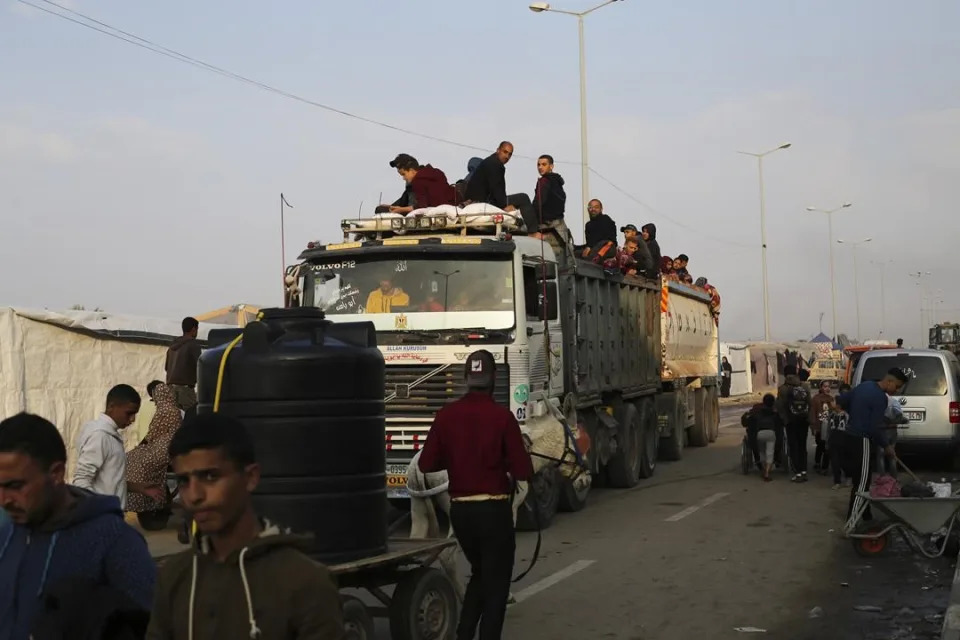
DEIR AL-BALAH, Gaza Strip (AP) — Thousands of Palestinian families fled Wednesday from the brunt of Israel’s expanding ground offensive into Gaza’s few remaining, overcrowded refuges, as the military launched heavy strikes across the center and south of the territory, killing dozens, Palestinian health officials said.
On foot or riding donkey carts loaded with belongings, a stream of people flowed into Deir al-Balah — a town that normally has a population of around 75,000. It has been overwhelmed by several hundred thousand people driven from northern Gaza as the region was pounded to rubble.
Because U.N. shelters are packed many times over capacity, the new arrivals set up tents on sidewalks for the cold winter night. Most crowded onto streets around the town’s main hospital, Al-Aqsa Martyrs, hoping it would be safer from Israeli strikes.
Still, no place is safe in Gaza. Israeli offensives are crowding most of the population into Deir al-Balah and Rafah at the territory’s southern edge as well as a tiny rural area by the southern coastline. Those areas continue to be hit by Israeli strikes that regularly crush homes full of people.
Israel has said its campaign in Gaza is likely to last for months, vowing to dismantle Hamas across the territory and prevent a repeat of its Oct. 7 attack into southern Israel. Benny Gantz, a member of the country's three-man War Cabinet, said the fighting ”will be expanded, according to need, to additional centers and additional fronts.”
He and other Israeli officials also threatened greater military action against Lebanon’s Hezbollah, hiking fears of an all-out war on that front.
The two sides have exchanged fire almost daily across the border. Israeli Foreign Minister Eli Cohen warned Wednesday that “all options are on the table” if Hezbollah does not withdraw from the border area, as called for under a 2006 U.N. cease-fire.
Hezbollah leader Hassan Nasrallah “must understand that he’s next,” Cohen said.
DEATH, DISPLACEMENT AND STARVATION
Israel's offensive in Gaza has already been one of the most devastating military campaigns in recent history. More than 21,100 Palestinians, most of them women and children, have been killed, according to the Health Ministry in Hamas-ruled Gaza. The count doesn’t differentiate between civilians and combatants.
Some 85% of Gaza’s population of 2.3 million people have fled their homes. U.N. officials say a quarter of Gaza’s population is starving under Israel’s siege, which allows in only a trickle of food, water, fuel and other supplies.
The latest people to be displaced fled from several built-up refugee camps in central Gaza targeted in the latest phase of Israel's ground assault. One of the camps, Bureij, came under heavy bombardment throughout the night as Israeli troops moved in.
“It was a night of hell. We haven’t seen such bombing since the start of the war,” said Rami Abu Mosab, speaking from Bureij, where he has sheltered since fleeing his home in northern Gaza.
The Israeli military issued evacuation orders for Bureij and neighboring areas Tuesday. The area was home to nearly 90,000 people before the war and now shelters more than 61,000 displaced people, mostly from the north, according to the U.N. Bureij camp, like others in Gaza, houses refugees from the 1948 war surrounding Israel’s creation and their descendants and now resembles other densely populated neighborhoods.
It was not known how many were evacuating. In Deir al-Balah over the past two days, empty lots have filled up with families in tents or sleeping on blankets on the ground.
This was the third move further south for Ibrahim al-Zatari, a daily laborer. First he, his wife and four children moved in with relatives in Gaza City after a strike flattened their home in northern Gaza. Later, they fled to Bureij to escape fighting in the city. On Wednesday morning, they made an hourslong journey on foot to Deir al-Balah, where — like many others — they wandered the streets looking for an empty spot to lie down.
“There is no foothold here,” he said. “Where should we go?”
With much of northern Gaza leveled, Palestinians fear a similar fate awaits other areas, including Khan Younis, where Israeli forces launched ground operations in early December. The Israeli military said Wednesday it deployed another brigade in the city, a sign of the tough fighting.
Israeli shelling Wednesday struck a residential building in Khan Younis next to Al-Amal Hospital, according to the Palestinian Red Crescent, which runs the facility.
Health Ministry spokesman Ashraf al-Qidra said at least 20 people were killed and dozens more wounded. Footage from the scene showed several torn bodies lying in the street as rescue workers loaded a man whose legs had been severed onto a stretcher.
Despite U.S. calls for Israel to shift to a more precise assault, the military so far appears to be following the same pattern used in earlier phases of the ground offensive in northern Gaza and Khan Younis. Before troops move in, heavy bombardment targets what Israel says is Hamas’ tunnels and military infrastructure. Fierce urban fighting follows as troops move block to block, backed by airstrikes and shelling that the military says aim to force out pockets of militants. The resulting devastation has been massive.
Israel has said Hamas must be destroyed after its its Oct. 7 attack in which militants broke through Israel’s formidable defenses and killed some 1,200 people — mostly civilians — and abducted around 240. An estimated 129 remain in captivity after dozens were freed.
Israel blames Hamas for the high civilian death toll in Gaza because the militants operate in residential areas. Late Wednesday, the army said it destroyed a network of tunnels that stretched for several kilometers in Gaza City and served as a command and control center. Part of it ran under a hospital and had an exit inside a neighboring school, it said.
The military says it has killed thousands of militants, without presenting evidence, and that 164 of its soldiers have been killed in the ground offensive.
WARNING OVER LEBANON
Cross-border exchanges of fire have escalated between Hezbollah and the Israeli military.
An Israeli strike on a family home in Lebanon overnight killed a Hezbollah fighter, his brother and his sister-in-law, local officials and state media said Wednesday. A day earlier, a Hezbollah strike wounded 11 people in northern Israel.
Since the Gaza war began, the near daily battles have forced tens of thousands of Israelis to evacuate their homes from nearby communities. At least nine soldiers and four civilians have been killed on the Israeli side, and around 150 people on the Lebanese side, mostly fighters from Hezbollah and other groups, but also 17 civilians.
Gantz warned that time for diplomatic pressure was “running out.”
"If the world and the Lebanese government will not act to stop the firing on the northern settlements and keep Hezbollah away from the border, the IDF will do so,” he said, referring to the Israeli military.
In the occupied West Bank, Israeli forces killed at least six Palestinians during an overnight raid in the refugee neighborhood of Nur Shams, according to the Palestinian Health Ministry. More than 300 Palestinians have been killed in the West Bank since the start of the war, mostly in confrontations with Israeli forces during raids and protests.
___
Magdy and Keath reported from Cairo. Associated Press writer Najib Jobain contributed from Rafah, Gaza Strip.
___
Find more of AP’s coverage at https://apnews.com/hub/israel-hamas-war
Wafaa Shurafa, Samy Magdy And Lee Keath, The Associated Press

